Making your home truly energy-efficient boils down to a pretty straightforward game plan: first, figure out where you're losing energy; second, make smart upgrades; and third, build better habits. It all starts with a home energy audit to uncover the real problems—like hidden drafts or power-hungry appliances—so you can make targeted fixes that actually save money and make your house more comfortable.
Pinpoint Where Your Energy Is Going
Before you can slash your energy bills, you need to know exactly where your money is going. It's often a surprise for homeowners to see how much of their utility bill is spent heating or cooling air that just leaks right back outside. Outdated appliances are another huge, often overlooked, energy drain.
The first step is a simple DIY energy audit. You don't need any fancy gear for this, just a bit of observation. On a cool, windy day, take a walk through your home and feel for drafts around windows, doors, and even electrical outlets. These tiny leaks can add up, acting like a window left open 24/7 and forcing your HVAC system to work much harder than it needs to.
Your utility bill is another goldmine of information. Don’t just glance at the total. Most power companies provide detailed usage charts that break down your consumption by month or even by day. Look for the spikes. Did your bill shoot up in July? Your AC is the likely culprit. If a bill is surprisingly high during a mild month, you might be looking at an inefficient water heater or "phantom loads" from all the electronics you leave plugged in.
Getting this initial diagnosis right is the most critical part of the process. This simple flow shows how to approach creating a more efficient home.

As you can see, a solid strategy always starts with a thorough audit before you even think about buying new equipment or changing your habits.
Quick Wins from Your DIY Energy Audit
A simple walkthrough can reveal a ton about your home's energy performance. Use this checklist to spot the most common issues and identify some immediate, high-impact fixes you can make this weekend.
| Area to Inspect | Common Problem to Find | Immediate Action to Take |
|---|---|---|
| Windows & Doors | Feeling a noticeable draft; seeing daylight around the frame. | Apply new weatherstripping or use caulk to seal gaps. |
| Attic | Insulation is below the top of the floor joists or looks patchy. | Add another layer of insulation (fiberglass or cellulose). |
| Electrical Outlets | A cool breeze coming from outlets on exterior walls. | Install foam gaskets behind the outlet covers. |
| Water Heater | The tank feels warm to the touch. | Wrap it in an insulating blanket to reduce standby heat loss. |
| Large Appliances | The refrigerator or freezer is more than 10-15 years old. | Check the Energy Star rating and start budgeting for a replacement. |
This isn't about a complete overhaul—it's about finding the easy wins that start saving you money right away.
Prioritize Your Action Plan
Once you've found the energy vampires, you can build a smart action plan. The good news? The most effective changes are often the cheapest and easiest to tackle.
Focus on these areas first:
- Air Leaks: Sealing drafts with a $5 tube of caulk or some weatherstripping offers an incredible return on your investment.
- Insulation Gaps: Take a peek in your attic. A surprising number of homes, especially older ones, are seriously under-insulated.
- Appliance Age: Still have a refrigerator from the 90s? It could easily be using three times more electricity than a modern, efficient model.
This push for home efficiency is part of a much bigger trend. The global energy efficiency market was valued at around $88.5 billion in 2021 and is on track to hit $122.3 billion by 2025, all thanks to better tech and smarter consumers. You can discover more insights about the energy efficiency market and see how this growth is shaping our homes.
By dedicating an afternoon to a simple audit, you're not just guessing—you're creating a data-driven roadmap. This ensures every dollar you spend on upgrades delivers the maximum possible savings on your future energy bills.
Your goal here is to tackle the "low-hanging fruit" first. These quick wins build momentum and deliver immediate savings, which can help fund the bigger, more impactful projects down the road.
Seal Drafts and Insulate for Big Savings

Before you even think about high-tech gadgets or a new HVAC system, some of the most impactful energy upgrades are surprisingly low-tech. The real energy hogs in most homes are completely invisible—tiny air leaks and subpar insulation that make your heating and cooling systems work way harder than they should.
I always tell people to think of it like trying to fill a leaky bucket. You can keep pouring in heated or cooled air, but if it's escaping through cracks and gaps, you're just paying to condition the outdoors. The U.S. Department of Energy estimates that these drafts can be responsible for 10-20% of your home's total heating and cooling bill. That’s money just floating away.
This is exactly why sealing up those drafts is one of the smartest first steps you can take. The return you get from a few tubes of caulk and some weatherstripping is just phenomenal.
Locating and Fixing Pesky Air Leaks
First thing's first: you have to play detective and find where the air is getting in and out. Drafts love to hide where different building materials come together. Grab a flashlight and start your hunt in these common problem areas:
- Windows and Doors: Check the frames and the trim where it meets the wall. You're looking for any visible gaps.
- Outlets and Switch Plates: These are notorious for being drafty, especially on your home's exterior walls.
- Pipes and Wires: Look under sinks, behind your washer, or anywhere plumbing and wiring enter your house from the outside.
- Attic Hatches: That simple square in your ceiling can be a massive source of heat loss in the winter.
Once you’ve found the culprits, the fix is usually pretty simple. For stationary gaps around window trim, a good quality caulk will do the trick. For anything that moves, like the edge of a door or a window sash, you'll want to use weatherstripping to create a tight but flexible seal.
Honestly, a single weekend spent hunting down and sealing air leaks can make your home feel more comfortable immediately. It also makes every other energy-saving investment, from your smart thermostat to a new furnace, work that much better.
Understanding and Boosting Your Insulation
With your home's "envelope" sealed tight, it's time to look at insulation. Insulation is all about R-value, which is just a measure of how well it resists heat flow. The higher the R-value, the better it insulates. If you live in an older home, chances are it’s under-insulated by today's standards.
A quick peek into your attic is the best way to check. If you can clearly see the tops of the ceiling joists, you almost certainly need more insulation. It's a simple visual test. Adding a fresh layer of insulation up there can be a total game-changer, especially if you live somewhere with hot summers or cold winters. For homes in colder climates, a well-insulated attic can cut heating costs by over 20%.
Not all insulation is the same, and different types are suited for different jobs.
| Insulation Type | Best Use Cases | Key Benefit |
|---|---|---|
| Fiberglass Batts | Easy to install in open spaces like unfinished walls and attics. | Great for DIY projects and widely available. |
| Blown-In Cellulose | Perfect for filling in existing walls or oddly shaped attic spaces. | Gets into every nook and cranny for a tight fill. |
| Spray Foam | Ideal for sealing rim joists, new construction, and unvented attics. | Creates a powerful air and moisture barrier. |
When you combine thorough air sealing with the right amount of insulation, you create a solid thermal barrier around your home. This duo doesn't just cut your energy bills; it also makes your home quieter and more comfortable all year long. It’s the foundational work that pays for itself over and over again.
Upgrade Your Home's Biggest Energy Users

Alright, once you've tackled the drafts and beefed up your insulation, it's time to turn your attention to the two undisputed heavyweights of your utility bill: your HVAC system and water heater. It's staggering, but together they can eat up over 60% of a typical home's entire energy consumption.
The goal here is to make these systems work smarter, not harder. And the great news is you don’t have to jump straight to a costly replacement. You can get some serious savings right away with a few smart upgrades and a little routine maintenance.
Start with a Smart Thermostat and Simple Upkeep
If you're looking for the single most effective and affordable upgrade for your heating and cooling, a smart thermostat is it. This one small change can slash your heating and cooling costs by 10% to 15% a year simply by learning your schedule and automatically dialing things back when you're asleep or away.
Think about it. No more constantly fiddling with the dial. You set it up once to match your family's routine, and it handles the rest. You'll never pay to heat or cool an empty house again. Just setting the temperature back 7-10°F for the eight hours you're at work or in bed makes a huge difference over the course of a year.
A smart thermostat is one of those rare upgrades that pays for itself, often within a year or two. You’re not just buying convenience; you’re investing in automated efficiency that works without you having to think about it.
Beyond the tech, don't forget the basics. A clogged air filter is your HVAC system's worst enemy. It forces the system to work overtime just to push air through, which wastes energy and puts a ton of strain on its components.
A few simple habits can keep it running smoothly:
- Check your filters monthly. A good rule of thumb: hold the filter up to a light. If you can't see the light clearly, it's time for a new one.
- Keep your vents clear. Make sure furniture, rugs, and drapes aren't blocking airflow.
- Tidy up outside. Your outdoor AC unit needs to breathe. Keep it clear of leaves, grass clippings, and any other debris.
These are no-cost tasks, but they pay dividends by helping your system run at peak performance and last longer.
Know When It's Time for a High-Efficiency Upgrade
If your furnace or water heater has been around for more than 15 years, it's probably a real energy hog compared to today's models. While I know replacing a major appliance is a big investment, the long-term savings on your utility bills can be massive.
When you're ready to take that step, here are the technologies to look into:
- Heat Pumps: These are fantastic all-in-one systems that handle both heating and cooling. Instead of burning fuel to create heat, they cleverly move it from one place to another. This makes them incredibly efficient, especially in climates that don't see extreme cold.
- Tankless Water Heaters: A traditional water heater is basically a giant, insulated kettle that's always on, keeping dozens of gallons of water hot. A tankless, or on-demand, heater only fires up to heat water the moment you need it. This simple change can cut your water heating energy costs by 24% to 34%.
This kind of forward-thinking technology is part of a much bigger picture. Globally, energy efficiency improvements have made our entire energy system about 7% more efficient, which has prevented an incredible amount of fossil fuel from being burned. If you’re interested in the data, you can review the complete statistical analysis from the Energy Institute to see the full scope. And to make sure all these new devices can talk to each other, it helps to understand the most common smart home protocols.
Before you buy anything, be sure to look for local and federal rebates or tax credits. These incentives can often take a significant bite out of the upfront cost, making the leap to a high-efficiency system a much easier decision.
Automate Your Savings with Smart Home Tech

Once you've tightened up your home's physical shell, it’s time to bring in the brains. Modern technology can automate energy savings in ways we could only dream of a decade ago. It’s about creating a responsive home that actively works to cut waste, 24/7.
This isn’t just about having a few cool gadgets. It’s about building a connected ecosystem where devices work in concert to manage your energy consumption without you lifting a finger. The goal is a home that practically runs itself, always keeping efficiency in mind.
Beyond the Smart Thermostat
A smart thermostat is an excellent first step, but it’s just the beginning. The real magic happens when you start integrating a whole suite of devices. That's when you'll see a serious dent in your energy bills, often without even noticing the changes day-to-day.
Think about expanding your setup with these game-changers:
- Smart Plugs: These are my go-to recommendation for anyone starting out. They’re cheap, easy to install, and incredibly effective. Use them to automatically kill power to electronics on standby, tackling that "phantom load" that can secretly add up to 10% of your electricity bill.
- Smart Lighting: Forget nagging the kids to turn off the lights. With motion sensors and automated schedules, lights only turn on when a room is occupied and shut off when it's empty. You can even have them dim gradually as the evening progresses, saving energy while setting a relaxing mood.
- Smart Appliances: Many new washers, dryers, and dishwashers can be scheduled to run during off-peak hours. Shifting your high-demand appliance usage to times when electricity rates are lowest is a simple change that delivers real savings over the year.
Of course, to get all this tech to work together seamlessly, you'll likely need a central controller. Getting the right one is key. To figure out what fits your needs, check out our in-depth smart home hub comparison.
How Smart Devices Impact Your Energy Bill
It helps to see the tangible benefits. Here's a quick look at how common smart devices translate into real savings.
| Smart Device | How It Saves Energy | Typical Annual Savings |
|---|---|---|
| Smart Thermostat | Learns your schedule and automatically adjusts temperature when you're away or asleep. | $100 – $145 |
| Smart Plugs | Eliminates phantom power draw from devices in standby mode. | $50 – $100 |
| Smart Lighting | Turns off lights automatically and allows for dimming to reduce electricity use. | $40 – $90 |
| Smart Blinds | Automates opening/closing to help heat or cool your home naturally with sunlight. | $25 – $75 |
These devices don't just add convenience; they actively chip away at your utility costs, making the initial investment pay for itself over time.
Creating an Automated Efficiency Scenario
So, what does this look like in practice?
Picture your morning routine. As you head out the door for work, your home kicks into "Away" mode. The thermostat dials back to a more economical temperature. The lights you left on in the bathroom switch off. Smart plugs cut power to your entire entertainment center and home office setup, ensuring not a single watt is wasted on phantom loads.
This isn't science fiction anymore. It's a practical, achievable way to make your home energy-efficient right now. Your home becomes an active partner in saving money and reducing your carbon footprint.
The market reflects this shift. Valued at $5.8 billion in 2024, the global Home Energy Management Systems market is on track to hit $21.7 billion by 2034. This explosive growth is fueled by homeowners adopting these very technologies. You can read the full analysis on home energy management system growth to see just how mainstream this is becoming. It's all about building an intelligent home that manages resources precisely, leading to lasting savings.
No-Cost Habits for Lower Energy Bills
While upgrades and new tech are great, some of the biggest energy savings are hiding in your daily habits. Making a few simple tweaks to your routine doesn't cost a dime, but it can easily knock 10% or more off your annual energy bill. This is where you see that being energy-smart is just as much about how you live as it is about what you buy.
Your thermostat is probably the most powerful tool you have for immediate savings. You'd be surprised how much of a difference just a degree or two makes. In the winter, try setting it a little lower while you're sleeping or away from home. This keeps the furnace from kicking on when you don't need it. The same logic applies in the summer—bump the temperature up a few degrees to give the air conditioner a break. Honestly, you probably won't even feel the change.
Master Your Appliances and Lighting
The laundry room and kitchen are goldmines for easy, no-cost savings. Think about your washing machine: most of the energy it consumes is just to heat the water. By simply switching to the cold water setting, you can slash that energy use. Don’t worry, modern detergents are formulated to work just fine in cold water.
And a quick tip for both your dishwasher and washing machine: always run a full load. It's a simple fact that running two half-loads consumes far more water and electricity than one full one.
Lighting is another area where small changes have a big impact.
- Let the Sun In: Before you flip a switch, open your curtains and blinds. Using natural light is the easiest way to light your home for free during the day.
- Use Task Lighting: If you’re just reading a book or working at a desk, why light up the entire room? A small, focused lamp is often all you need.
- Turn Lights Off: It’s the oldest trick in the book because it works. Get in the habit of turning off lights every single time you leave a room.
Phantom load is a sneaky culprit that drains your wallet. Many electronics and chargers pull power 24/7, even when they’re turned off. An easy fix is to plug your home office or entertainment center into a power strip. When you’re done, just flip one switch to cut the power to everything at once.
Use Your Home's Natural Features
Finally, get to know your home and work with its natural features. Your windows and blinds are surprisingly effective tools for controlling the temperature inside. On a scorching summer afternoon, closing the curtains on any sun-facing windows can block a massive amount of solar heat, giving your AC a much-needed rest.
The reverse is true in the winter. Open those same curtains to let the sunlight stream in and warm your home naturally. Your furnace won't have to work nearly as hard. These little adjustments, practiced consistently, turn your daily habits into a powerful force for a more efficient home and a much friendlier utility bill.
Common Questions About Home Energy Upgrades
Jumping into home energy improvements can feel a little overwhelming. With all the options out there, it's tough to know where to start or which upgrades will actually pay off. Let's tackle some of the most common questions I hear from homeowners, so you can start making changes with confidence.
What's the Best Place to Start for the Biggest Impact?
Hands down, the most effective first move is to get a home energy audit and then immediately tackle air leaks. It's not glamorous, but it works. Before you even think about new appliances or fancy tech, you have to stop paying to heat or cool the outdoors.
Grab some caulk and weatherstripping and get to work sealing drafts around your windows, doors, outlets, and anywhere pipes enter your house. This is a cheap, high-impact weekend project that makes every other upgrade you do far more effective.
I always tell people to think of it like this: You wouldn't install a brand-new, top-of-the-line furnace and then leave a window wide open all winter. Sealing your home's "envelope" is just like closing that window for good.
Are Big-Ticket Items Like Solar Panels Worth the Cost?
This is a classic "it depends" situation, but my advice is always to fix the foundation first. For the vast majority of homes, you'll get a much faster and better return on your money by adding proper attic insulation and sealing air leaks than you will from solar panels or brand-new windows.
Solar is a fantastic goal for reducing your reliance on the grid, but it's a major financial commitment. Whether it makes sense for you comes down to a few key things:
- Where you live and how much sun you actually get.
- The cost of electricity from your local utility.
- What government incentives (federal, state, or local) are available to you.
My rule of thumb is to handle the basics first—insulation, air sealing, efficient appliances. Don't spend a fortune generating solar power just to have it all leak out through a drafty, poorly insulated attic.
Realistically, How Much Can I Expect to Save?
Your savings will definitely vary depending on the starting condition of your house, your local climate, and how far you go with the upgrades. That said, it's totally realistic for most homeowners to cut their annual energy bills by 10% to 30%.
Simple DIY air sealing and a few new habits might get you in that 10-15% range. If you make bigger investments like adding attic insulation or upgrading to a high-efficiency HVAC system, you could easily see savings closer to 25-30%, sometimes even more. And as you add smart devices to manage all this, a solid network backbone becomes essential; our guide to planning your home smart wiring is a great resource for that.
The real key is to start with that energy audit. It gives you a specific roadmap, showing you exactly where your biggest and most cost-effective opportunities are hiding.
At Automated Home Guide, our goal is to help you build a home that's smarter, more efficient, and truly comfortable. Check out our other expert guides and resources to find the perfect solutions for your space. Learn more at https://automatedhomeguide.com.
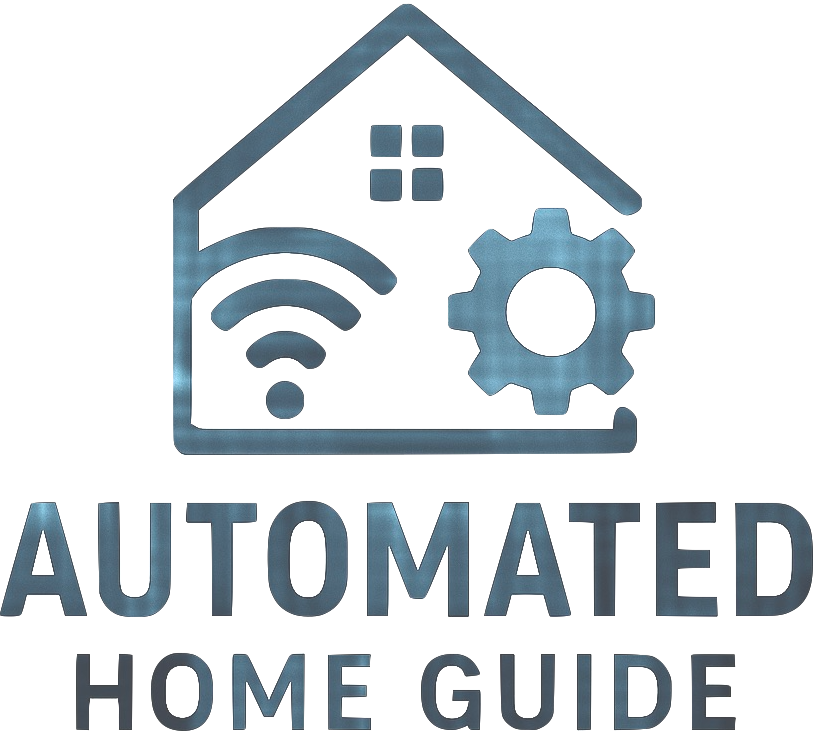
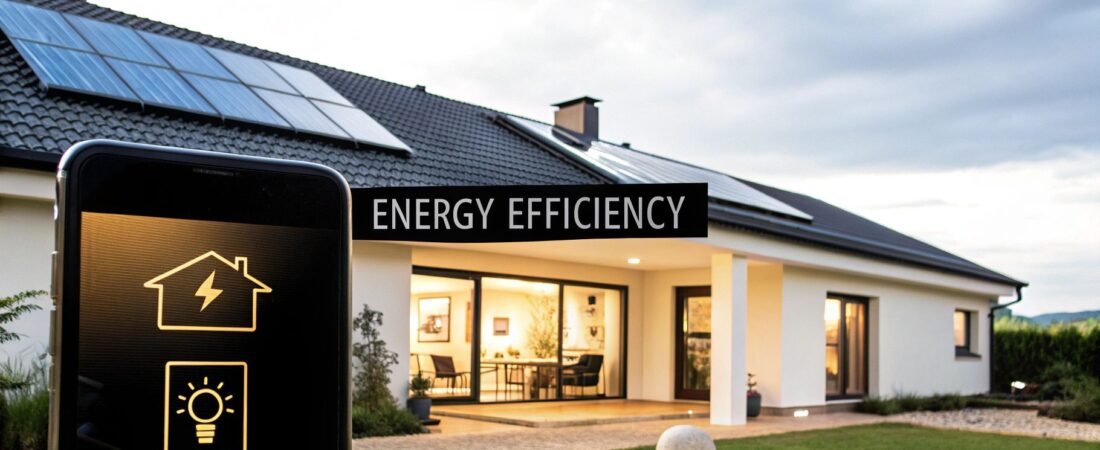
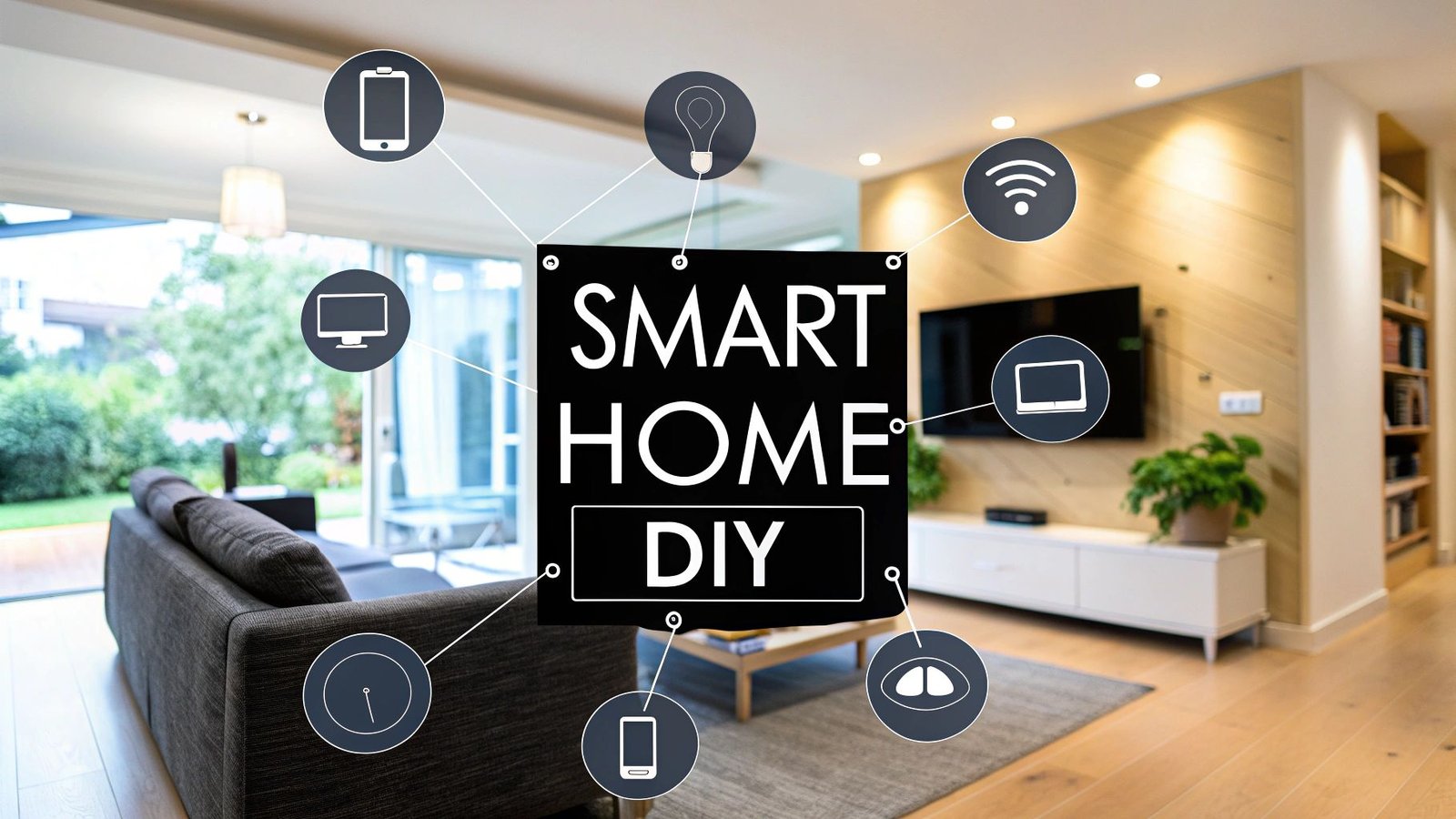
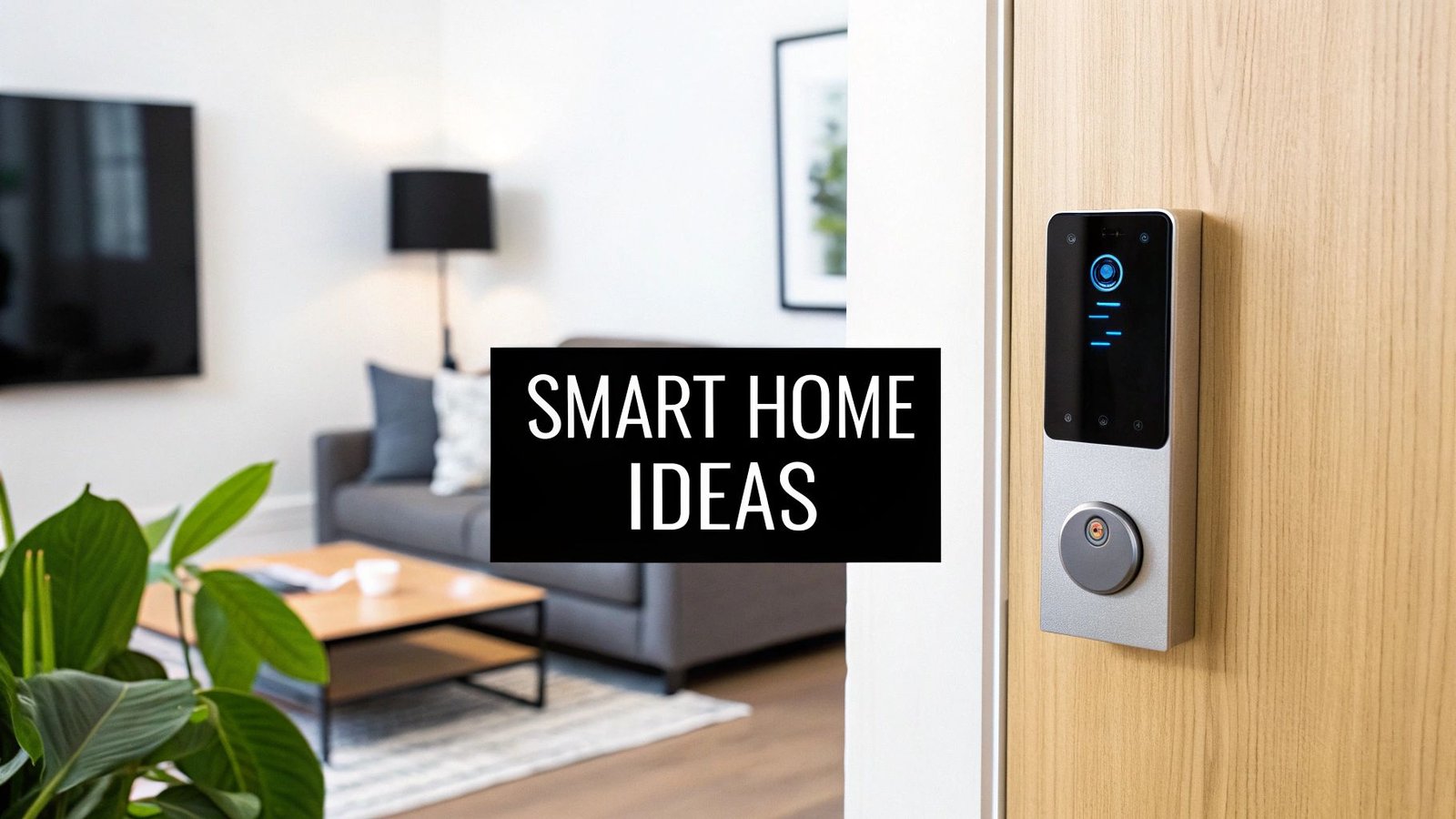

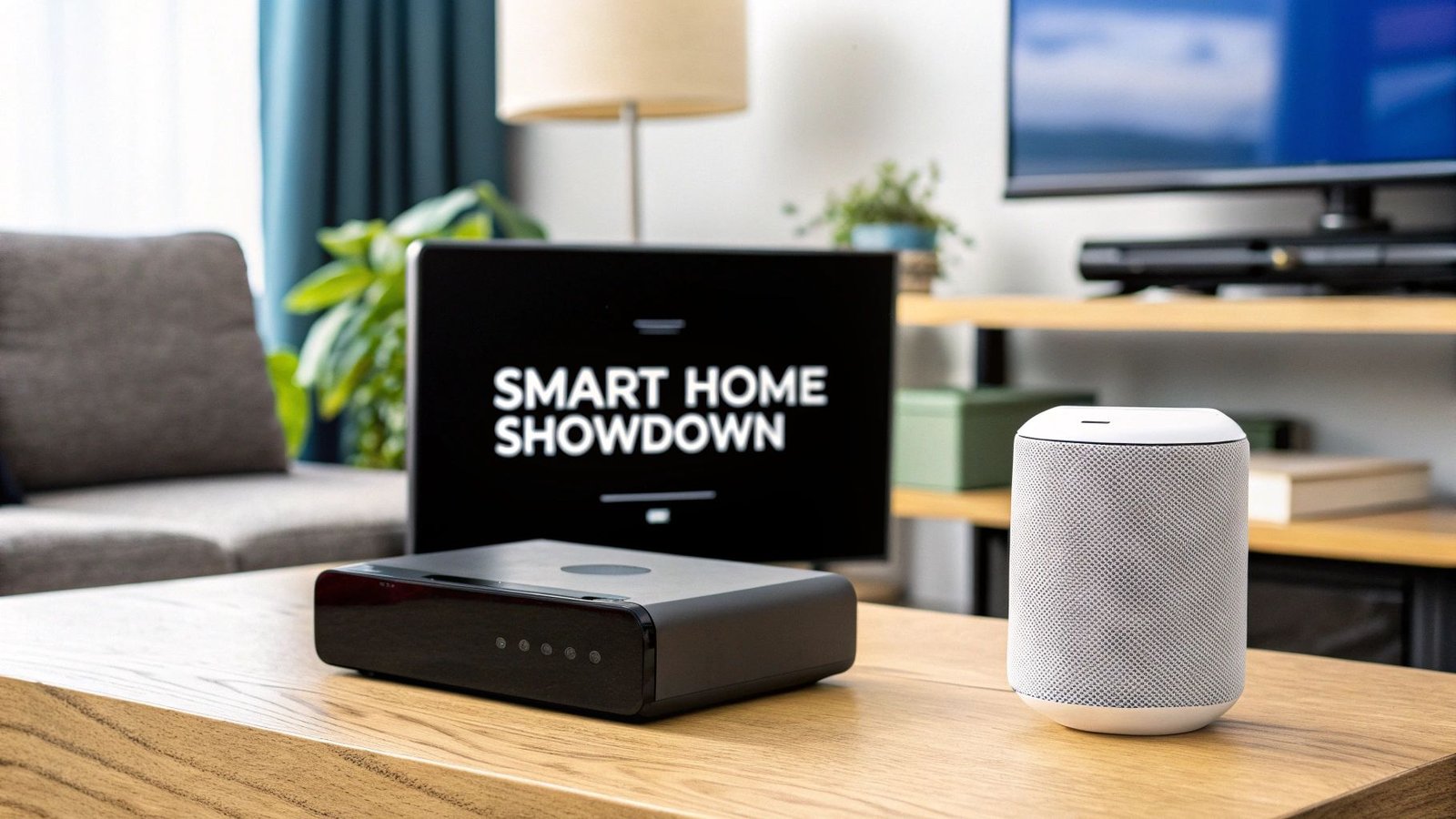


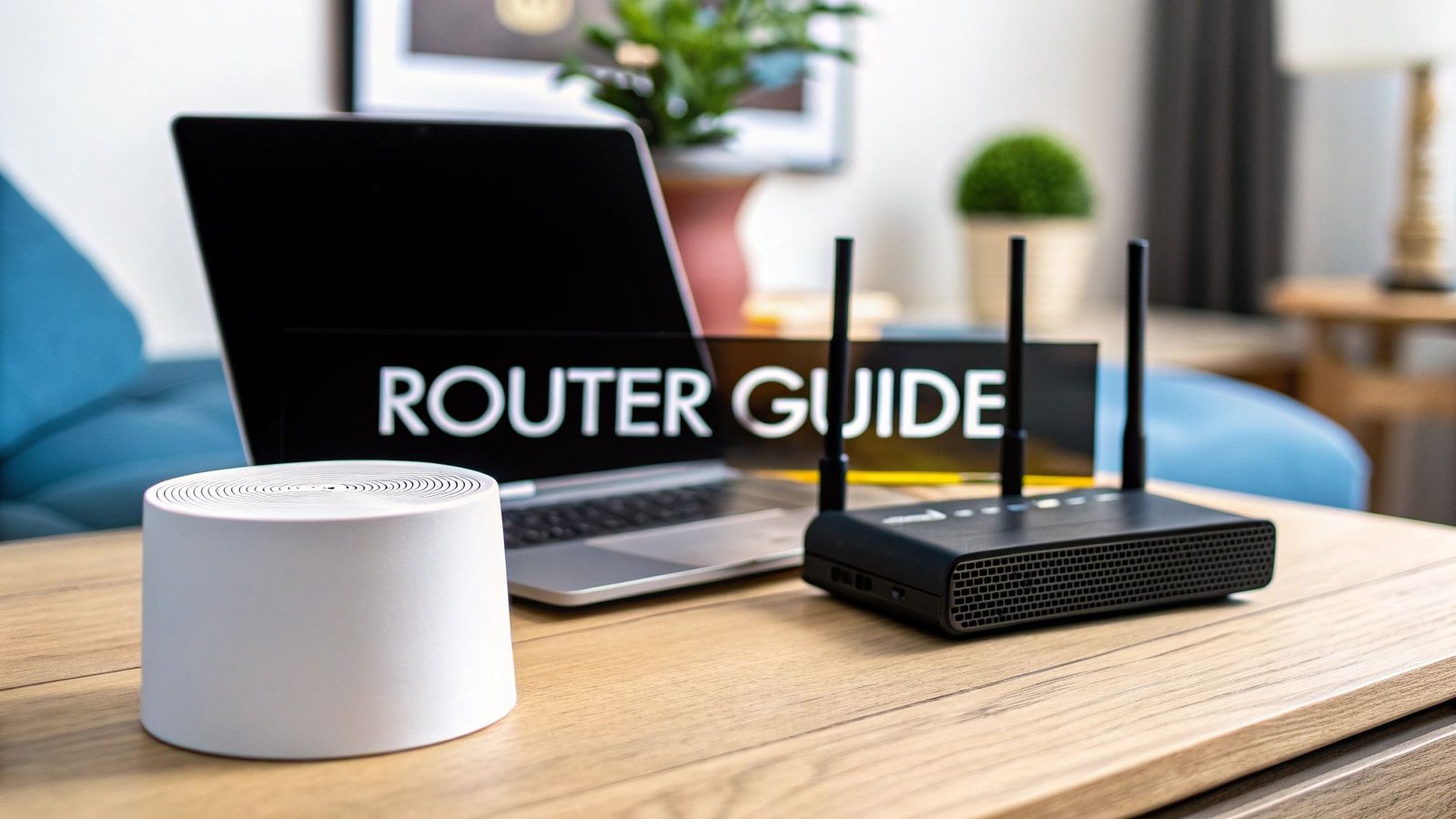
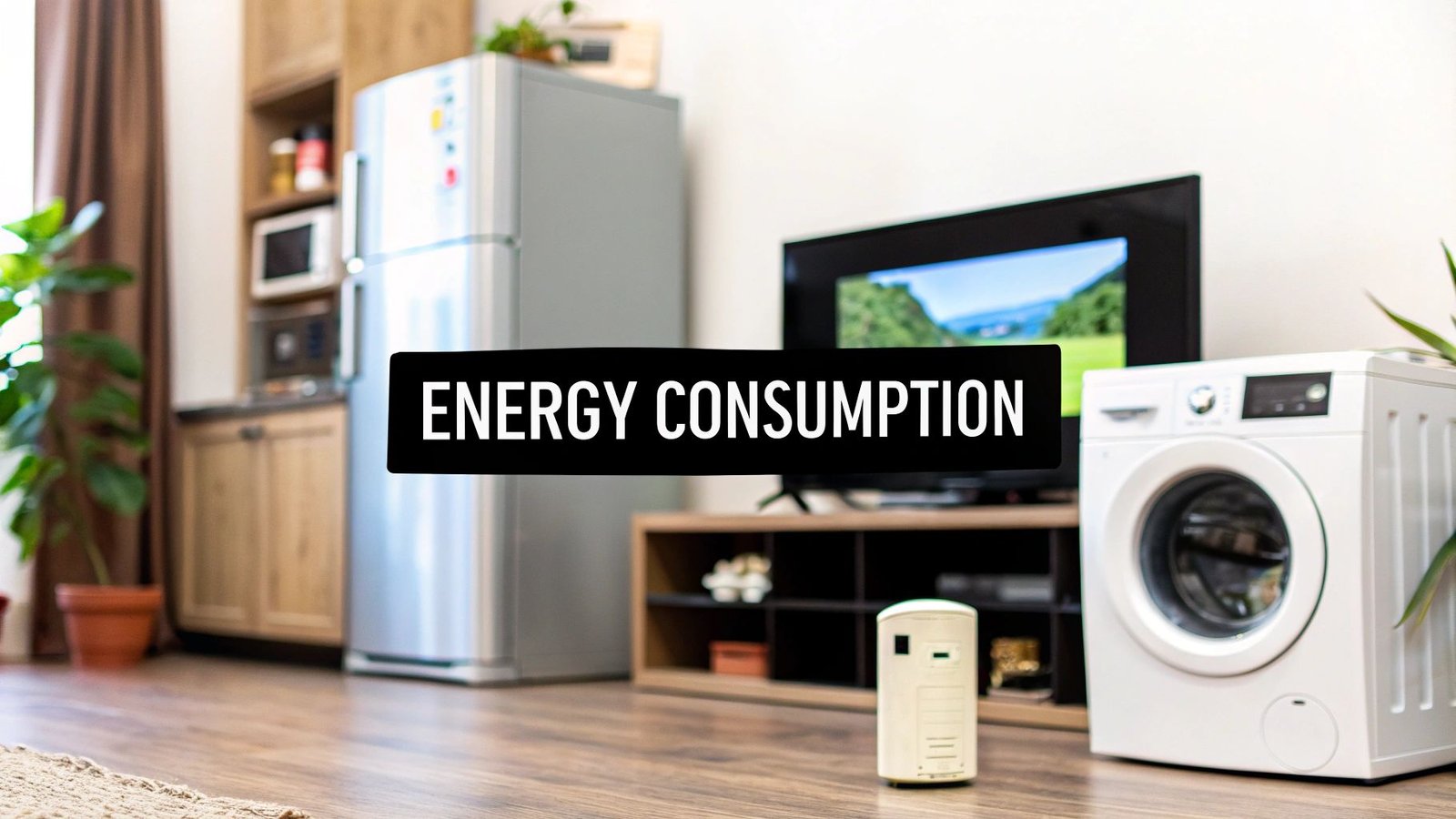
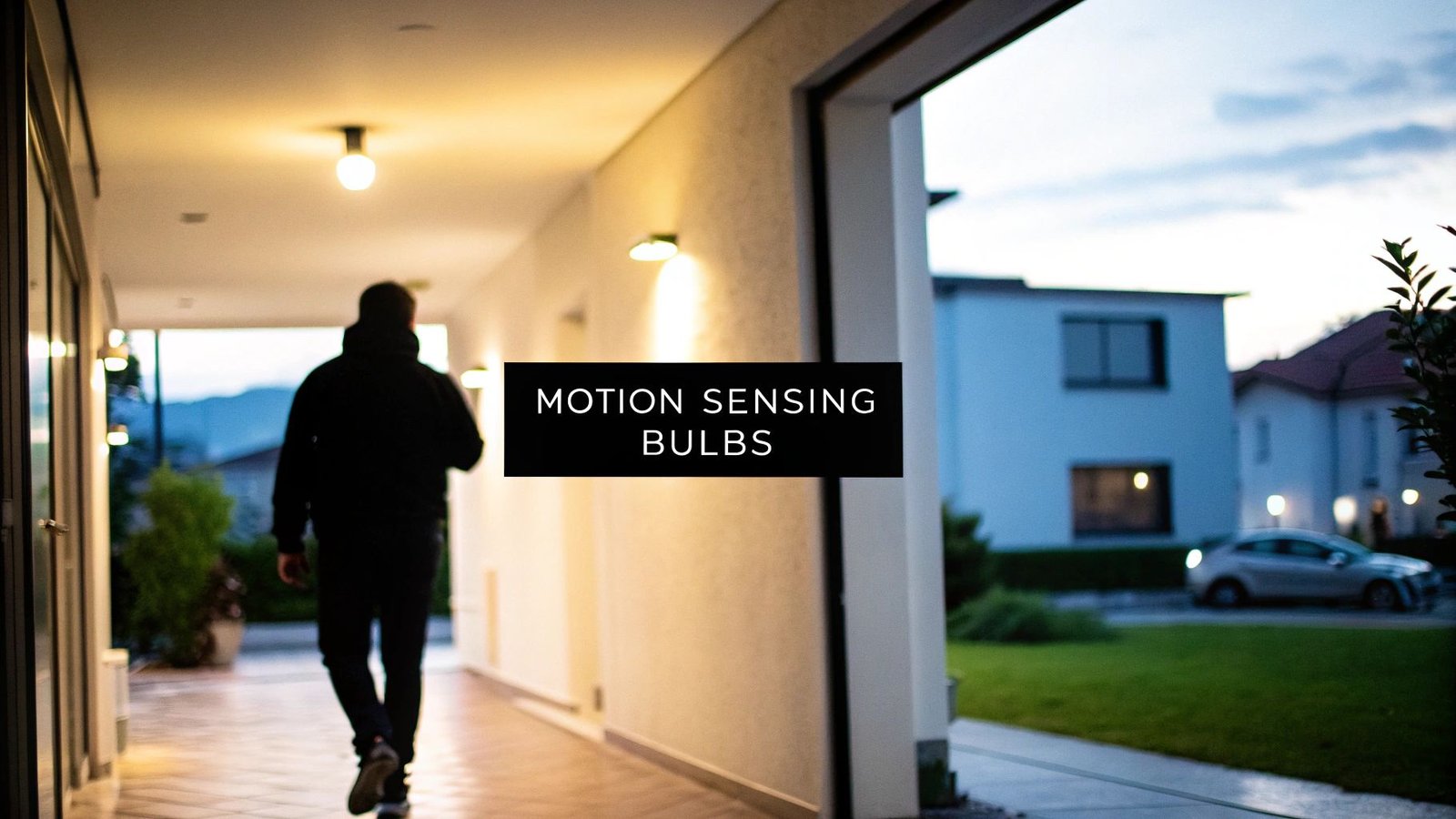
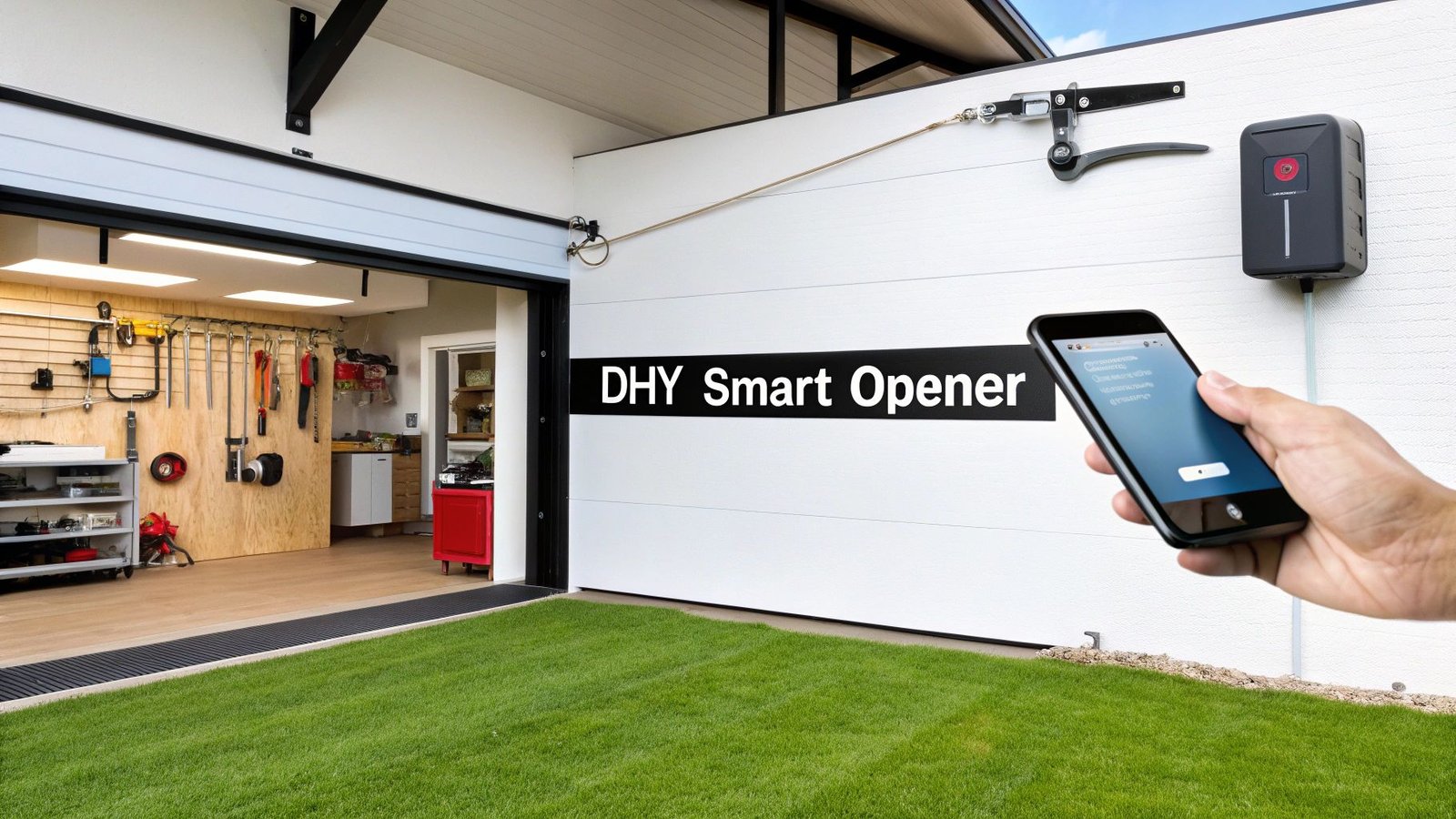
Leave a Reply